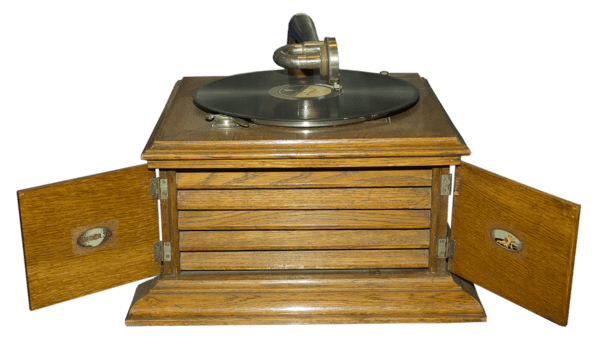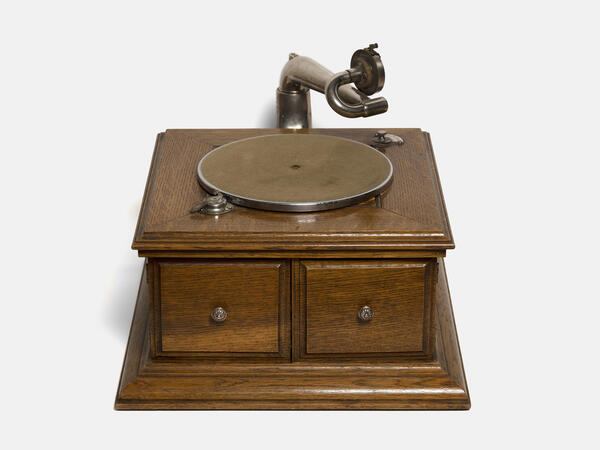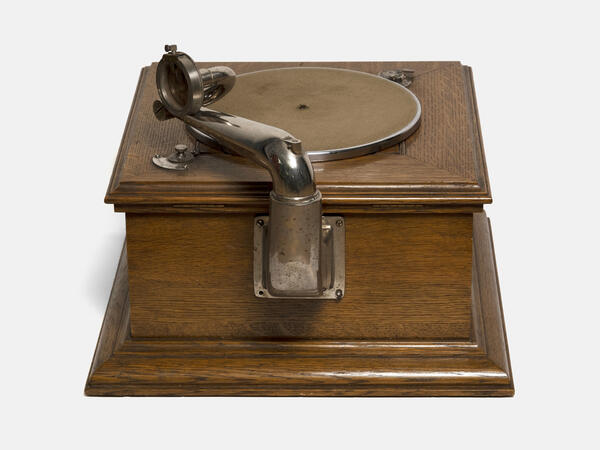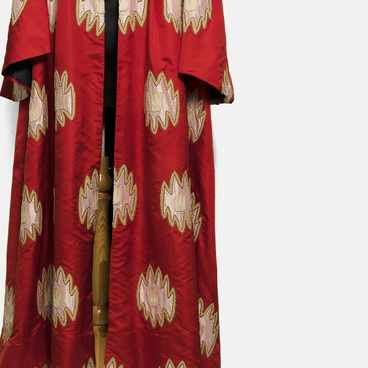A Victor phonograph, or a Victrola, is a musical device of the early 20th century, a type of gramophone without a detachable horn. The sound of a Victrola was more powerful than that of a gramophone; the volume was adjusted by opening and closing special doors of the wooden case. The phonograph was wound up with a metal handle installed on the side. The museum presents a Victrola from the house of Feodor Ivanovich Chaliapin in Moscow. In the 1900s, not everyone could afford such a beautiful and expensive thing.
This musical device was produced by the American company Victor Talking Machine Company, a leading manufacturer of gramophones and gramophone records. The word “Victrola” comes from the name of the owner of the company — Victor Orcier. The company’s logo was a Jack Russell Terrier dog listening to a record. The Victor company was one of the flagships of the world recording industry.
The Victrola is a desktop solid wood cabinet with oak veneer upholstery. The miniature inlaid doors make the sound system look exquisite. The inside surface of the lid is stamped with the “His Master’s Voice” logo. The sound of the Victrola is produced by a metal turntable lined with green broadcloth, a tonearm, an adapter, and a membrane.
In 1901, Feodor Chaliapin enjoyed great success at the La Scala Theater in Milan. He gave ten performances as Mephistopheles and recalled the following about those days,





